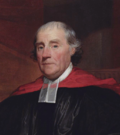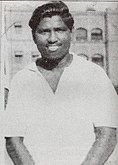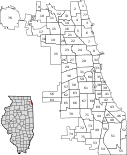Wikipedia:Today's featured list/August 2020
|
Featured list tools: |
August 3
The Battle of Trenton was fought on December 26, 1776, during the campaign for New Jersey of the American Revolutionary War. In a surprise attack, the Continental Army led by George Washington (pictured) attacked the winter quarters of a brigade composed primarily of German troops from Hesse-Kassel in Trenton, New Jersey. The Hessian brigade was under the command of Colonel Johann Rall; he died of wounds sustained in the battle, and about two thirds of his men were taken prisoner. It was the first major victory after a long string of defeats that had resulted in the loss of New York City, and was a significant boost to American morale. Most of the German brigade comprised three Hessian regiments: those of Rall, von Lossberg, and von Knyphausen. The remainder of the brigade consisted of artillery corps attached to each regiment, a detachment of Jäger, and a small company of British dragoons. The attacking American army consisted of units from the Continental Army, including companies of its artillery, and a few companies of militia. (Full list...)
August 7
At least 31 people have been the president of Washington College since 1782, four of whom have been interim presidents. Washington College is a private liberal arts college in Chestertown, Maryland, which is on the Eastern Shore of Maryland. The college was founded in 1782 by William Smith (pictured), but is the successor institution to the earlier Kent County Free School, which was founded in 1732. From the college's founding until 1922, the executive officer of the college was known as the principal, and subsequently as the president. The president of Washington College is appointed by the Board of Visitors and Governors, and serves at the pleasure of the board. Of the 31 presidents, only one, Joseph McLain, was an alumnus of the college, and only one, Sheila Bair, was a woman. The presidents of the college have been drawn from a variety of areas, including religion, military service, governmental service, and academia. (Full list...)
August 10
The first ten episodes of the 2011 anime series Puella Magi Madoka Magica aired on Japanese television channels MBS, TBS and CBC between January 7, 2011, and March 11, 2011. Puella Magi Madoka Magica was created by Magica Quartet (consisting of Akiyuki Shinbo, Atsuhiro Iwakami, Gen Urobuchi, and Ume Aoki), produced by Shaft, and distributed by Aniplex. It follows the story of 14-year-old Japanese middle school student Madoka Kaname, who is offered the chance to have any wish granted on the condition that she become a magical girl and fight against evil witches. Puella Magi Madoka Magica began development after Shinbo expressed his desire to work on a new magical girl series to producer Iwakami while they were working on Hidamari Sketch and Bakemonogatari. Due to the 2011 Tōhoku earthquake and tsunami, the broadcasts of episodes 11 and 12 were delayed and were later aired as a double feature on April 21, 2011. (Full list...)
August 14
The first player ever to score a hat-trick for India in an international football match was R. Lumsden. He achieved the feat in a friendly match against Australia on 24 September 1938, at the Sydney Showground, although India lost the match 5–4. Since independence in 1947, nine Indian players have scored a hat-trick in an international football match. No Indian player has ever scored more than three goals in a single game. The first player after independence to score a hat-trick for India was Sheoo Mewalal (pictured) in a 4–0 victory over Burma in the 1952 Colombo Quadrangular Tournament. Sunil Chhetri is the only Indian footballer to have scored a hat-trick more than once; he has achieved the feat three times, the latest of which came in India's 5–0 victory over Chinese Taipei in the opening match of the 2018 Intercontinental Cup. Neville D'Souza was the first Asian to score a hat-trick in the history of Olympic football. He achieved the feat in a 4–2 victory over Australia at the 1956 Melbourne Olympics. (Full list...)
August 17
The 23 genera and 59 species of Mustelidae, a family of mammals in the order Carnivora, are split into 8 subfamilies: Guloninae, martens and wolverines; Helictidinae, ferret-badgers; Ictonychinae, African polecats and grisons; Lutrinae, otters; Melinae, Eurasian badgers; Mellivorinae, the honey badger; Mustelinae, weasels and minks; and Taxidiinae, the American badger. A member of this family is called a mustelid; Mustelidae is the largest family in Carnivora. They are found on all continents except Antarctica and Australia, and are a diverse family; sizes (including tails) range from the widespread 17 cm (6.7 in) least weasel to the 1.8 m (5.9 ft) giant otter of Amazonian South America. Habitats vary widely as well, from the arboreal marten to the fossorial European badger to the marine sea otter. (Full list...)
August 21
Claudio Monteverdi (1567–1643) composed ten operas, a genre that emerged while he was a court musician in Mantua. His first opera, L'Orfeo, premiered in 1607 and became the first opera still in today's repertoire. The music for seven of his opera projects is mostly lost. Four of these were completed and performed, while he abandoned the others at some point. Libretti have survived for some of them, as well as fragments of the music for L'Arianna and Proserpina rapita. Monteverdi composed operas for a theatre in Venice when he was master of music at San Marco, including Il ritorno d'Ulisse in patria in 1640 and L'incoronazione di Poppea in 1643, both of which also remain in the repertoire. (This list is part of a featured topic: Operas by Claudio Monteverdi.)
August 24
The 2017 Indian Tamil-language neo-noir action thriller film Vikram Vedha won 19 awards from 46 nominations; its direction, screenplay, music, and the performances of R. Madhavan (pictured), Vijay Sethupathi and Varalaxmi Sarathkumar have received the most attention from award groups. The film received seven nominations at the 65th Filmfare Awards South, including those for Best Film (S. Sashikanth), Best Actor (Madhavan and Sethupathi) and Best Supporting Actress (Varalaxmi). It won in four categories – Best Director (Pushkar–Gayathri), Best Actor (Sethupathi), Best Male Playback Singer (Anirudh Ravichander for "Yaanji") and Critics Award for Best Actor – South (Madhavan). At the 10th Vijay Awards, it received fifteen nominations and won four, Best Director, Best Screenplay Writer, Best Actor and Best Background Score. (Full list...)
August 28
Fifty centuries were scored by cricketers in the ICC Champions Trophy, a One Day International (ODI) tournament organised by the International Cricket Council (ICC) from 1998 to 2017. India led the list, with ten centuries, followed by Sri Lanka, with seven. Alistair Campbell of Zimbabwe was the first to score a century in the tournament, when he made 100 against New Zealand during the inaugural edition. Four players – India's Sourav Ganguly (pictured), South Africa's Herschelle Gibbs, the West Indies' Chris Gayle and India's Shikhar Dhawan – held the record for the most number of centuries, with three each. A further four players – Pakistan's Saeed Anwar, England's Marcus Trescothick, Sri Lanka's Upul Tharanga and Australia's Shane Watson – each scored two centuries. Gayle's three centuries in 2006 was a record for any player in a single edition. The 145 by New Zealand's Nathan Astle against the United States was the highest individual score. (Full list...)
August 31
Chicago is divided into 77 community areas for statistical and planning purposes. Census data and other statistics are tied to the areas, which serve as the basis for a variety of urban planning initiatives on both the local and regional levels. The areas' boundaries do not generally change, allowing comparisons of statistics across time. The areas are distinct from but related to the more numerous neighborhoods of Chicago. As of 2017[update], Lake View is the most populous of the areas, with more than 100,000 residents, while Burnside is the least populous, with just over 2,000. The Social Science Research Committee at the University of Chicago defined the community areas in the 1920s based on neighborhoods or groups of related neighborhoods within the city. In this effort it was led by sociologists Robert E. Park and Ernest Burgess, who believed that physical contingencies created areas that would inevitably form a common identity. (Full list...)








